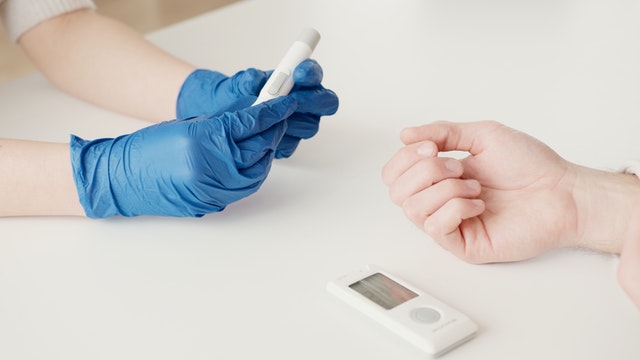The PTCB® exam has updated the new version from January 2020 and our materials combine everything that’s surveyed on the most current adaptation of the test. It is recommended for you to note that there are now only four segments considered restricted to the past nine. The unused test fundamentally covers the same material, with a couple of augmentations that we have included in our PTCB® exam preparation. Anh now, it’s time for the Study Guide For Patient Safety and Quality Assurance.
General information of patient safety and quality assurance

All of your knowledge of Patient Safety and Quality Assurance included in this PTCB® Exam study guide has witnessed a careful assessment by approximately 26.25% of the total PTCB® questions on the most up-to-date version (2020) of the PTCB® Exam. This implies that replying accurately influences around one-fourth of your test score. It is important for you to be capable in all of these subjects.
Check out our Comprehensive PTCB Study Guide for more information
The topics often come from four diverse segments of the ancient test. Numerous are, of course, from the ancient areas on Medication Safety and one part comes almost from Quality Assurance. However, the most up-to-date version (2020) of the PTCB® Exam also pulls several topics from the ancient sections of Laws and Regulations and Information Systems.
There’s one topic on this up-to-date version (2020) of the PTCB® Exam that was not specifically shown within the ancient test substance: medicine mistakes. Inside this theme, such concerns as irregular measurements, early refill, erroneous amount, of the base patient, and erroneous medication are secured. Questions approximately this subject will likely include calculations.
Potential for Risk
When working in the role of a pharmacy technician, there’s a continuous chance of the occurrence of a medical mistake. There are various steps to assist relieve and decreasing the potential for medical risks. In any case, being careful and mindful of these certain methodologies will assist you to perform your day-by-day errands within the pharmacy more proficiently and blunder-free.
- Medication And High Alert
High-alert, as well as high-risk medications, are those solutions that are more likely to cause hurt to an understanding in case utilized erroneously or in mistake. For example, the blood-thinning sedate warfarin has the potential to cause noteworthy dying in the case of a medicate overdose, medicate interaction, or medicate observing mistake. The ISMP (which stands for The Institute for Safe Medication Practices) is an essential asset for distinguishing high-alert medicines, warfarin as an example.
- LASA (Look-Alike or Sound-Alike) Medications
Comparable solutions are a genuine security concern and a common cause of pharmaceutical blunders. Fair since two medications’ names see or sound alike does not cruel they can be utilized and traded. Besides, blunders in communication or medical choice can have possibly deadly results. For drugs that are similar to other types of drugs, the responsibility of pharmacy technicians is to continuously double-check the sedate title and quality.
Tall man lettering is utilized on numerous sedate items and executed in numerous drug store frameworks to assist the drug store workforce separate two exceptionally comparative-looking pharmaceutical names. It would be ideal if you allude to the Tall Man Lettering subsection underneath for more. As is the case of look-alike drugs, the responsibility of pharmacy technicians is to continuously double-check the medicate title and quality of sound-alike drugs. Once more, tall man lettering may be utilized when communicating in the method of writing. Basically, inquiring about the individual talking to spell the medicate title can help clarify that the right medication is being examined.
Error prevention strategies
“Everybody makes mistakes.” You’ve listened in several cases before and it’s certainly true, indeed in a drug store. However, in the event of managing people’s well-being, a small mistake can be amazingly perilous, so the objective of great drug store specialists is to recognize blunders and diminish their events. The most perfect way to avoid pharmaceutical blunders is to anticipate them from happening even at the start. Numerous practices can be executed, utilized by themselves or in combination, to diminish the chances of a pharmaceutical mistake and, in the event that it does happen, to reduce the probability that it’ll occur with the patients.
- Correct order to correct patient
It is imperative to keep in mind the five “rights” of a pharmaceutical organization: right medication, right route, right dosage, right time, and right patient. Recollecting and remembering these five rights will offer assistance in avoid a medical mistake from happening. When you have to ring out a customer/patient at the register or drive-thru, it is always simple to seize the wrong order as well as dispense this order to the wrong patient, as retail drug stores can some of the time be a fast-paced environment. In expansion to remaining watchful, performing these strategies will offer assistance get the proper arrangements each time:
- Verify the patient’s name/date of birth
- Verify the patient’s street address
- Briefly specify what you’ve got for the patient to choose up, like “I have your blood weight and acid reflux medicine here. Is there anything else that you are looking forward to having?”
These three basic confirmation steps will offer assistance to decrease the hazard of an apportioning blunder.
- Tall man lettering
Tall man lettering is often utilized to assist separate parcels of sound-alike/look-alike medicinal names that are distinctive so as to draw one’s eye to a potential source of the mistake. Consider the case of hydralazine (which is a type of antihypertensive) and hydroxyzine (which is a type of antihistamine). These drugs seem the same but the three middle letters. Subsequently, on the bottle and when communicating the name of the drug in the method of writing, those diverse letters will be capitalized to draw the reader’s eye to the potential disparity (you can consider hydrALAzine and hydrOXYzine as an example of this situation).
- Inventory separation
Inventory administration makes up a considerable portion of the workload of a pharmacy team. Inventory administration may incorporate requesting and accepting items, recognizing particular capacity necessities, and evacuating lapsed or reviewed drugs. Plan 2 (or the C-II) controlled substances are subject to extra stock checks and equalizations. Inside a drug store, diverse procedures for partitioned medicines may be utilized. To be more specific, it is possible that the high-risk medications are put away independently from other types of medications, and drugs with comparable definitions may be put away together so that the drug store representative can easily compare “like” items to recognize the right and suitable medication.
- Leading and trailing zeros
Leading and trailing zeros are vital concepts that the pharmacy technician should keep in mind, particularly amid information passages and when performing calculations. For entirety numbers, don’t utilize trailing zeros, as within the case of 5.0; instep, basically type in the entire number (5) and add units. Of note, a zero ought to be included before a decimal point (as within the case of 0.5 mg or 0.75 mL) to increase the potential chance of mixing drugs overdose.
- Barcodes
Comparative to NDC codes, each drug’s standardized identification is interesting and can be utilized to confirm that the right item is chosen. It is incomprehensible to do this with the exposed eye. Instead, a scanner may be effectively utilized for the purpose of checking the person’s medicare item into the system and to confirm the proper drug is chosen within the drug filling procedure.
Abbreviation use
It is recommended for the Abbreviations to be dodged at whatever point conceivable. To be more specific, “QD” ought to be composed out as “once a day” or “daily” for the purpose of avoiding unnecessary confusion with QID (4 times a day) or QOD (each day). Within the busy work environment in the pharmacy, truncations could seem speedier or less demanding to utilize, but spelling out what you mean will spare a large amount of time – and anticipate errors – in the long term.
- Pharmacist intervention
A drug specialist ought to continuously be accessible within the drug store in case of questions or concerns. Creating a collaborative relationship and knowing when to allude to your drug specialist colleagues will assist you to be effective as a pharmacy technician. At whatever point a question or concern emerges from the clinical perspective, it is your prompt to inform the pharmacist that he/she is required for intercession. It is not recommended for the pharmacy technician to never handle a clinical issue or give clinical data, as usually one of the numerous obligations of the pharmacists when they are on duty.
- Drug Utilization Review (or the DUR)
Pharmacists take responsibility to conduct DURs (which stands for drug utilization reviews) earlier to apportion an unused pharmaceutical or refill an existing arrangement. The DUR ought to incorporate a comprehensive survey of the patient’s medicine and over-the-counter (OTC) drugs, with an extraordinary center on drug-drug intelligence and potential adverse drug events (which is often called as ADEs). Drug specialists ought to be counseled in case patients have questions or concerns in terms of their medications (counting OTCs) or in case medicates abuse or mishandling is suspected.
- Adverse Drug Event (ADE)
Adverse drug events (which is often called as ADEs for short) are undesirable responses that happen from the ordinary utilization or potential abuse of medicine. These occasions can be due to a medicine blunder or an unfavorable response from commonsense. Antagonistic occasions from medicine are more genuine than side impacts and have the potential to cause harm or indeed be life-threatening. Any unfavorable occasion, notwithstanding its beginning, ought to be archived in a patient’s chart to increase the potential risk of it happening once more within the long run. Moreover, it is critical for such occasions to be detailed to the FAERS (or the Adverse Event Reporting System) for the purpose of quality confirmation.
- OTC recommendation
An OTC medicine (or over-the-counter) medicine is a type of medicine that does not require medicine to be gotten from the drug store. OTC medicine regularly treats the side effects of minor illnesses such as gentle torment, cough/cold side effects, regular hypersensitivities, or a sleeping disorder. Cases of OTC medicines incorporate acetaminophen, phenylephrine, cetirizine, and diphenhydramine. It is required for the pharmacist to continuously be accessible at the drug store counter for the purpose of helping with any OTC questions or suggestions.
Despite the fact that it is not required for the OTC medications to have a prescription, it is still critical for the pharmacist to be accessible to assist suggest the most excellent OTC item to treat the customer’s particular affliction. A few clients may be drawn to an item that they saw on TV or listened to approximately on the radio. Usually where the drug specialist steps in to guarantee the security and legitimate choice of an OTC item given the patient’s pharmaceutical and restorative history.
- Therapeutic substitution
Restorative substitution permits for a medicine to be exchanged for a distinctive pharmaceutical within the same sedate lesson (in spite of the fact that it is not the same sedate) without beginning with checking with the prescriber. This practice is particularly common in clinics and government offices, in which examinations of security, viability, and fetched frequently decide which restricted supply of drugs (closed model) will be kept up on-site. It is critical to note that helpful substitution is diverse than nonexclusive substitution, which happens when the nonexclusive adaptation of a medicate is substituted for the brand title sedate (for example: “Zoloft” is endorsed but “sertraline” [nonexclusive for Zoloft] is apportioned).
- Misuse
Pharmaceutical misuse—whether deliberateness or unintentional—is considered a public health crisis. Pharmaceutical abuse may happen in a number of distinctive ways. To be more specific, an individual may take somebody else’s sertraline to self-medicate his or her discouragement, an individual may take lorazepam more frequently than endorsed since of expanding uneasiness, or an individual may intentioned take oxycodone in an exertion to “get high.” Notwithstanding the cause or aim, drug store staff ought to be careful with respect to false medicines and changes in understanding behavior to assist distinguish cases of abuse and mishandling.
- Adherence
Distinguishing basic causes of missed dosages can offer assistance to dodge treatment disappointments and unfavorable results moving forward. Much like medicine mistakes, the cause of a missed dosage may be multifactorial. Checking a patient’s medicine profile to find out the lapsed refills can offer assistance to distinguish the potential issue, and pharmacist counseling on the significance of pharmaceutical adherence and adherence strategies can offer assistance in getting the healthcare process of patients back on track.
- Post-Immunization Follow-Up
In case a pharmacist regulates an antibody, certain data ought to be archived within the occasion an unfavorable response happens post-immunization. The taking after ought to be recorded when an antibody is managed in any case in case given compatible with medicine or standing, and arrange understanding socioeconomics, requesting prescriber, route and location of administration, antibody parcel number and termination date, the title of immunized, and date managed…
- Allergies
A complete as well as a running list of a patient’s sensitivities, counting response sort, ought to be recorded before apportioning any drug store item. Occasionally, drug store staff ought to audit with a patient sensitivity list to note any changes. The pharmacy specialist ought to continuously audit a patient’s sensitivity list before apportioning a drug store item, notwithstanding if it could be a medicine or OTC medicine. In case a persistent creates a hypersensitivity to an apportioned medicine, it ought to be documented and famous to ensure the item isn’t apportioned within the future.
- Drug interactions
In the event the pharmacist performs a sedate utilization audit, he/she surveys the patient’s profile and pharmaceutical list to require under consideration any potential for drug-drug intelligence. A few drug-drug intuitions may warrant particular counseling focuses or observing parameters for the drug specialist to go over with the patient earlier to apportion. But a few potential drug-drug intuitions may warrant a call to the provider’s office for elective treatment in case serious or life-threatening.
Event reporting procedures
Adverse occasions in expansion to medicine blunders ought to be detailed and archived both inside and remotely for quality affirmation purposes. Such detailing isn’t utilized for negative or corrective reasons but instead to get the forms that took place and to superior the practice of pharmacy.
- Medication errors
Medicine mistakes can happen at any step of the medicine utilizing preparation, extending from endorsing and translating to apportioning and regulating. Indeed after a pharmaceutical has been utilized, in the event that it isn’t fittingly checked, a blunder may happen. It is vital to distinguish the source of a pharmaceutical mistake to dodge future problems. Be that as it may, the method of recognizing a particular source may be challenging since pharmaceutical blunders is frequently multifactorial. The patient included within the blunder ought to also be notified if unconscious as well as the endorsing practitioner.
- Adverse effects
As expressed within the ADE (which is called Adverse Drug Event also) area over, unfavorable impacts or responses to a pharmaceutical ought to be detailed to the FAERS (or the FDA Adverse Event Reporting System). In the event that the plenitude of ADEs is detailed on the same pharmaceutical, the FDA will take activity on the medicate producer to moderate or resolve the suspected issue. The result from the FDA can run from the incorporation of a dark box caution on the item, item review, or indeed obligatory medicine direct issuance at whatever point the item is apportioned. Medications may be pulled from the advertisement in case adverse events are serious or life-threatening.
- Product integrity
Any pharmaceutical item that’s apportioned ought, to be honest to goodness and its judgment ought to be up to the pharmaceutical manufacturer’s benchmarks. A product’s judgment can be compromised due to lacking capacity, temperature changes, dampness levels, etc. Besides, a pharmaceutical that has bypassed its termination date ought to never be apportioned, as the item judgment is imperfect. Due to lacking capacity, these ought to be disposed of from stock and not apportioned because the product integrity has been partly compromised.
- Root-Cause analysis
A root-cause investigation is utilized to decide the basic root cause of an issue. In pharmacy, this regularly includes looking at the forms set in place for filling and apportioning a medicine and at what point did a blunder happen. It is critical to know the beginning of a pharmaceutical blunder for handling advancement and to anticipate it from repeating. To make strides on this, the drug store actualized standardized identification filtering. Standardized identification filtering makes the item determination handle simpler because it will not permit medicine to be filled or checked by the pharmacist unless the standardized identification of the medicine is scanned and matches the precise medicine that’s recorded on the medicine name.
Types of prescription errors
It is of most extreme significance in each drug store staff’s responsibility is careful when preparing prescriptions. Continuously double-check your work, as a straightforward botch on your portion has the potential to hurt the patient. It is your duty to have a concrete understanding of your obligations and how to effectively total them with a negligible edge of blunder.
- Abnormal doses
It is eventually up to the pharmacist at the quality affirmation check to approve the helpful fittingness of a medication’s dose being endorsed. But it is useful for the pharmacist to gotten to be recognizable with standard dosing, dose shapes, and courses of organization of common medicines. In the event that ever is in question, let’s ensure to inquire the pharmacist before the process of data entry.
- Incorrect quantity
Apportioning the right amount of medicine is a vital step of the prescription filling preparation. Now and then it isn’t as simple as essentially filling the amount composed on a medicine. It is vital to note that it is legitimate to apportion less than the amount authorized on medicine, but you ought to never apportion more than what is composed. In the event that a patient requests to just fill 28 days of a non-controlled pharmaceutical but the medicine is composed for 84 days, it is lawful to do so. The remaining amount will be on record at your drug store until the persistent chooses to refill it.
- Incorrect patient
It isn’t exceptional for two patients to have the same title recorded in your drug store computer framework. Be beyond any doubt to include an alarm note in their understanding profiles to double-check the patient’s choice so a mix-up does not happen in the future. Too, ensure to recognize postfixes at the conclusion of a patient’s title like Jr. or Sr. as that has the potential to cause inaccurate patient choice as well.
- Incorrect drug
The determination of an off-base medication can happen at information passage or amid item determination. This will happen due to carelessness or when medications sound-alike/look alike. To be more specific, dexilant may be a proton pump inhibitor utilized to treat GERD, which is commercially accessible in 30MG and 60MG measurements. Duloxetine could be a medicine utilized to treat an assortment of conditions counting sadness, which is accessible in those measurements among others. See how the two seem effectively blended up in case one was not paying consideration or working as well quickly? It can be terrible in the event that a patient gets the upper rather than their acid reflux medicine, or vice-versa.
Above is our Study Guide For Patient Safety and Quality Assurance. We hope that all the information and knowledge provided in this article can help you when working in the pharmacy or taking the PTCB® exam.
If you want to get more study guides about PTCB, visit our website and take our free PTCE practice test or download it for your IOS or Android devices now!

Pharmacy Sig Codes: All Medical and pharmacy abbreviations You Should Know
It is critical to understand and retain pharmacy sig codes. We've included a master list of these abbreviations in this blog.
January 1, 2022

List Of Drug Suffixes And Meaning
In this article, we give you the way to remember the top 200 drugs easier with drug suffixes and meaning. Let’s get started!
January 1, 2022

Top 200 Drugs Every Pharmacist Should Remember [2024 Updated]
Let's look at the top 200 drugs list, each of which includes a list of all active chemicals as well as the drug class to which each ingredient belongs.
January 1, 2022

